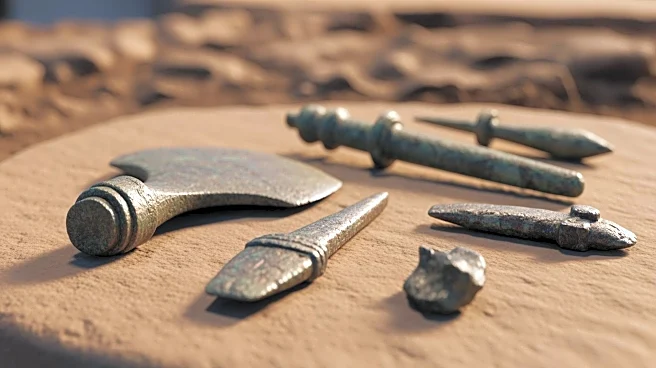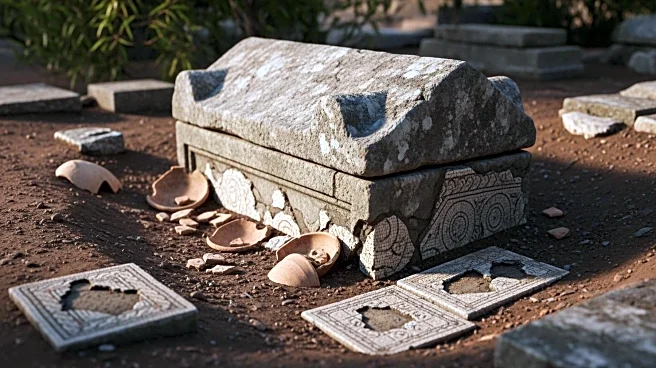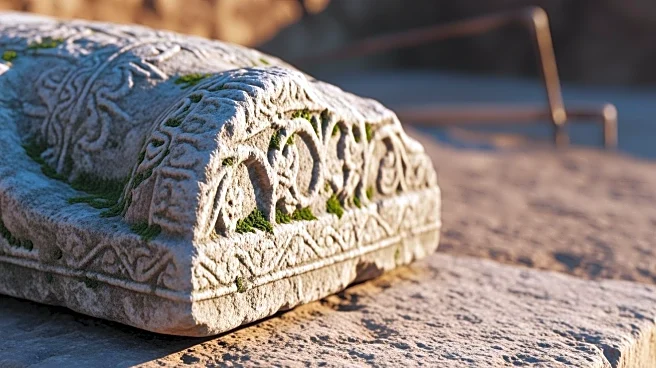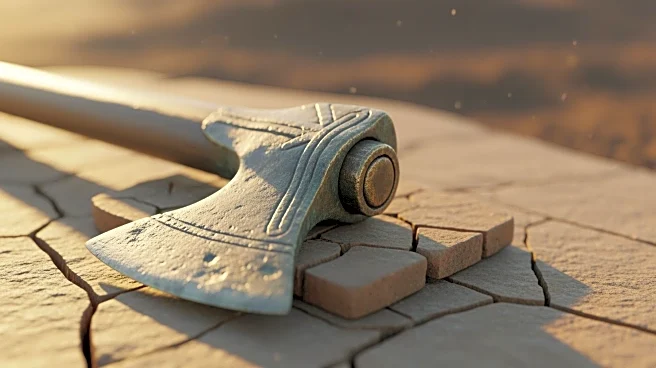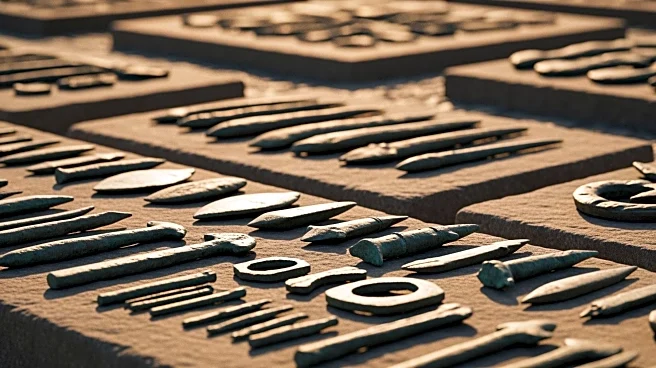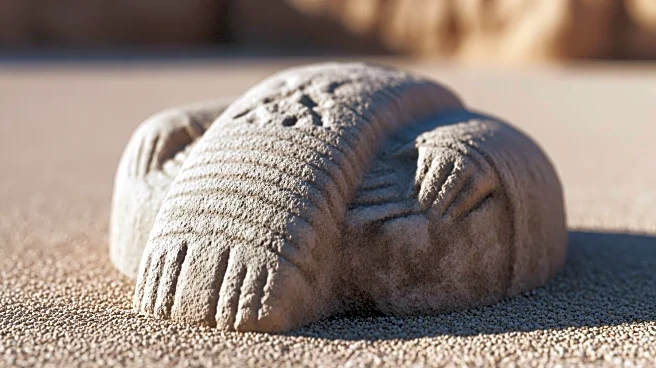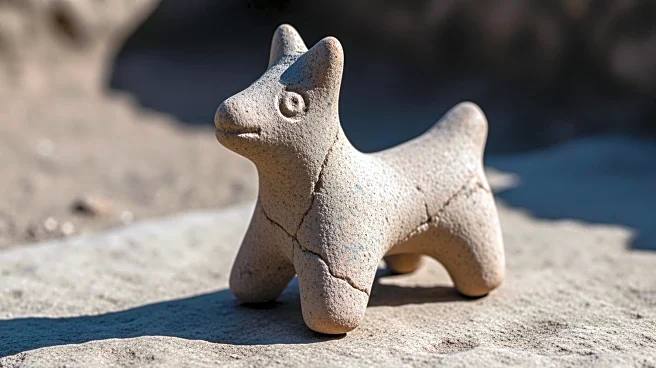What's Happening?
Archaeologists have uncovered the remains of an ancient Bronze Age city named Semiyarka on the Kazakh Steppe. The site, which dates back 3,500 years, was initially identified through declassified spy satellite
photos from 1972. Recent surveys using drones and geophysical methods have revealed a 140-hectare city with rows of houses, a central building, and workshops for bronze smelting and casting. The city was strategically located with a view over the Irtysh River valley, suggesting control over movement along the river. The discovery highlights the city's role as a hub for nomadic herders, traders, and settled metalworkers.
Why It's Important?
The discovery of Semiyarka provides significant insights into the social and economic dynamics of Bronze Age societies in Central Asia. It challenges previous assumptions about the region's history, suggesting a more complex interaction between nomadic and settled communities. The advanced metalworking industry indicates a high level of technological development and trade, which could reshape understanding of economic networks in ancient times. This finding may influence future archaeological research and theories about the spread of metallurgy and urbanization in prehistoric Eurasia.
